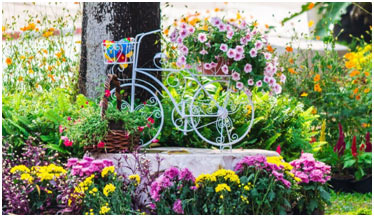Sometimes you just wish to enjoy your garden– you want to step outside and close your eyes. On a beautiful day when the sun is shining, the breeze gently blows, birds are chirping, bees are humming, you do not actually desire to come down to gardening business. It would be nice to take a moment to sit back and delight in the victory of well-designed garden plans and smell all those various roses types and other flowers.
When it pertains to planning a low-maintenance garden, it all starts with choosing the right plants. You want something you can not eliminate. You do not especially want to need to deal with a fungicide. You’d rather not need to stress over when to prune.
Make gardening simpler with low maintenance plants. Simply plant and view your garden prosper as they bloom year after year. Here’s our leading 6 preferred low maintenance plants:
Peony
Scientific name: Paeonia suffruticosa
Peonies are indigenous to Asia, Europe, and Western North America. A lot of peonies are herbaceous perennial plants 0.25– 1 meter (1– 3 ft) high, however, some are woody shrubs 0.25– 3.5 meters (1– 11 ft) tall. They have compound, deeply lobed leaves, and large, typically fragrant flowers, in colors varying from purple and pink to red, white, or yellow, in late spring and early summer.
The flowers have a short blooming season, generally just 7– 10 days. The fallen petals of Paeonia lactiflora are parboiled and sweetened as a tea-time special. The roots of this plant are often utilized in herbal medications by Japan and China.

Berberis
Scientific name:Berberis vulgaris
They are well known for their appealing pink or red fall color. The flowers are produced singly or in racemes of as much as twenty on a single flower-head. Species are most diverse in South America and Asia; Europe, Africa, and The United States and Canada have native species as well.
Berberis vulgaris grows in the wild in much of Europe and West Asia. It produces large crops of edible berries, rich in vitamin C, however with a sharp acid flavor. Iran is the country where these berries are mostly utilized, where they are described as zereshk (زرشک) in Persian. The berries are common in Persian food such as in rice and as a flavoring for curries.

Peppermint
Scientific name: Mentha × Piperita
It is a hybrid mint, a cross between water mint and spearmint. Peppermint generally grows best in damp, shaded locations. For the house garden enthusiast, it is often grown in containers to limit rapid dispersing. It grows best with an excellent supply of water, without being water-logged, and planted in locations with part-sun to shade.
Peppermint can be found over much of the world; native to Europe and Asia, it has been naturalized in North America. Fresh or dried peppermint leaves are typically used in peppermint tea or with other herbs in herbal teas and also used in flavoring curries, ice cream, and other edible things.

Reed canary grass
Scientific name: Phalaris arundinacea
Reed canary grass also is known as ribbon grass. The leaf blades are generally green. This is a perennial grass which spreads out underground by its thick rhizomes. Ribbon grass can be most commonly found in Europe, Asia, northern Africa, and North America.
Reed canary grass grows well on bad soils and contaminated industrial sites. When grown, although drought-tolerant, it likes plentiful water and can even be grown as an aquatic plant. It is primarily grown as an ornamental plant.

Money plant
Scientific name: Epipremnum aureum
It is also called devil’s vine or devil’s ivy because it is practically difficult to eliminate or kill and it stays green even when kept in the dark. The money plant is a popular houseplant in temperate areas but has actually also become naturalized in tropical and subtropical areas worldwide, consisting of northern Australia, Southeast Asia, South Asia, the Pacific Islands, and the West Indies.
This plant produces trailing stems when it climbs trees and these take root when they reach the ground and grow along with it. It is often utilized in ornamental displays in shopping centers, workplaces, and other public areas largely since it needs little care and is also attractively leafy.

Hosta
Scientific name:Hosta albofarinosa
Hostas are widely cultivated as shade-tolerant foliage plants. They are native to Japan, Korea, and China but are naturalized in other states too.
The flowers of hosta are produced on upright scapes that are woody and remain on the plant throughout winter, they are typically taller than the leaf mound While normally grown for decorative purposes, all types of hosta are edible and are grown as vegetables in some Asian cultures.


